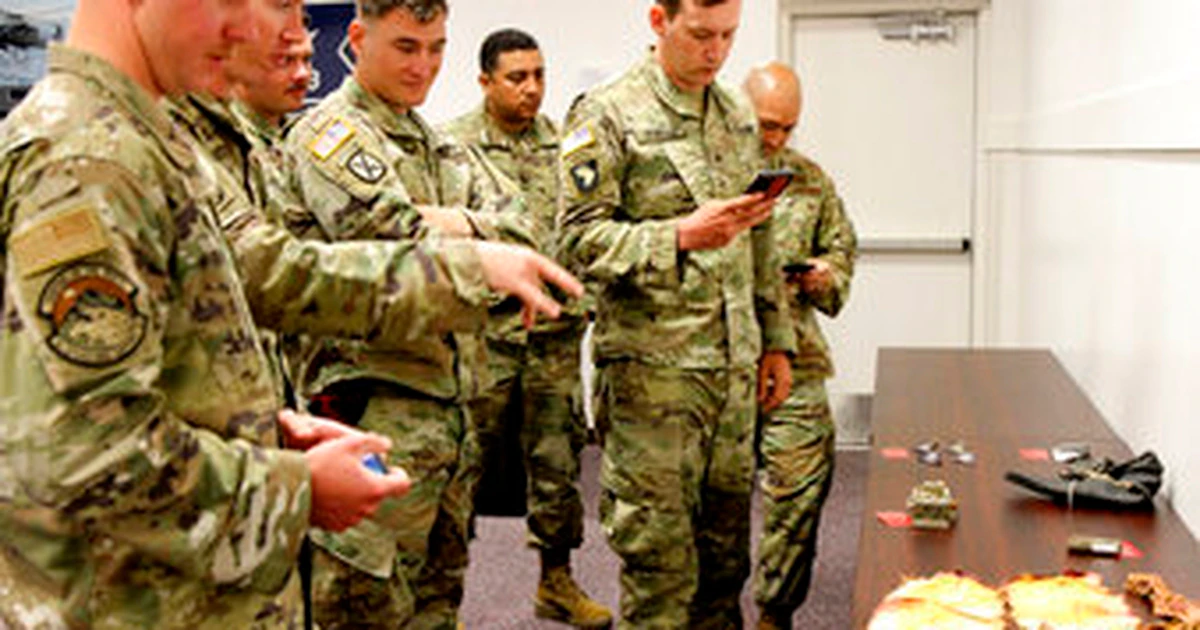
JOINT BASE ELMENDORF-RICHARDSON, Alaska (AP) — The solemn task of sifting through rocks, twigs and ice to find human remains as small as a fingernail continued this month on a glacier north of Anchorage, nearly 69 years after all 52 members of a military transport flight were killed when the plane slammed into a mountain.
Wreckage from the plane was spotted by the Alaska National Guard in 2012 during a training mission, setting up annual trips by military officials to recover remains of the crew and passengers of the C-124 Globemaster, which was en route from Fort McChord in Washington state to Elmendorf Air Force Base in Anchorage when it crashed in bad weather on Nov. 22, 1952. By the time a search party arrived about two weeks later, the plane was covered by deep snow and couldn’t be located.
From previous recovery missions, 43 people on board the flight have been identified using DNA, dental records or fingerprints, officials said Tuesday at a news conference to discuss results of this year’s effort.
Crews on Saturday finished the two-week search at Colony Glacier with the intent of providing closure to more families.
They recovered over 460 bags of remains and nearly 100 bags of personal effects, said Capt. Briana Quintana, lead planner and ground forces commander for the mission. She is with Air Force Mortuary Affairs Operations based at Dover Air Force Base in Delaware, where the remains and artifacts will be returned for analysis.
The remains and personal effects were in good condition, likely due to the glacier, Quintana said.
“They’re being preserved pretty well in the ice,” she said.
/cloudfront-us-east-1.images.arcpublishing.com/mco/GQ4EIGZZ7BCZLDHTATOTCV3RB4.jpg)
Katherine Grosso, a medical legal investigator with the Armed Forces Medical Examiner System, said crews working on Colony Glacier, nearly 50 miles east of Anchorage, have noticed it is “really dynamic, that it changes rapidly, daily.”
“As we participate in this mission from year to year, we find that not only does the pitch of the glacier change, but the type of material that you find on it changes,” she said.
They saw a lot of silt, mud and really small portions of rock, which makes fragments of remains difficult to find, he said.
“It’s required a little bit more of finesse to be able to recover those,” Grosso said. However, “we’re still finding that we’re able to recover quite a bit of material.”
Among the personal items found on the glacier from the wreckage were two playing cards, the seven and queen of spades; a pair of shoes; a 1944 map, apparently of the Anchorage area; and two chess pieces.
These were chosen for display at the news conference because they showed the everyday items that military members on board moving from Washington state to Anchorage would have, and there was no personal identifiers on them, said the deputy planner for the mission, Capt. Lyndi Minott, also stationed at Dover.
Also found was a camera, but there was no film inside. Minott said they found film on the glacier, but it didn’t contain images.
Of all the personal items recovered this year, the camera struck a chord with Minott.
“That’s only because my father takes a lot of photos and loves to document our lives,” she said. “To have a personal effect like that found was an emotional experience.”
Next year will mark the 10th anniversary of the wreckage being spotted at the toe of Colony Glacier, 12 miles (19 kilometers) downhill from where the plane hit Mount Gannett. When asked how long the military will continue to search for remains, Quintana, this year’s mission leader, said that decision would be made by those who outrank her.
“I can say with some confidence that as long as we are finding remains out on the glacier and we have people yet to identify and bring home, we will keep looking,” she said.



Be the first to comment